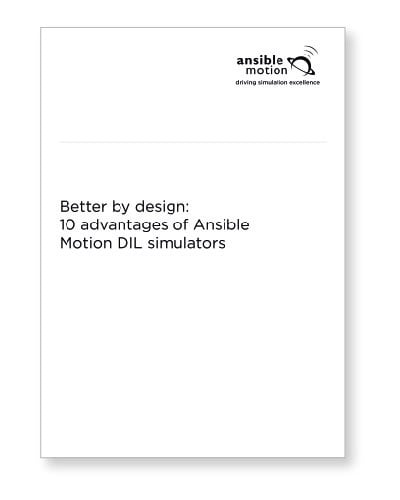Driver in the Loop (DIL) simulation has long been considered a powerful tool for both vehicle and component development. For traditional vehicle development work – such as ride and handling, steering, and powertrain – driver feedback is essential, offering subjective information that no data logger can deliver.
 Driving simulators place real people into direct contact with experimental systems, and this is arguablythe main reason why so many car makers have invested in them. As simulators become more widely accessible to engineers and grow ever more computationally powerful (our own Delta Series simulators are typically powered by an array of 16 5GHz PCs), their performance levels are rising to the point where they also can be used for validating Advanced Driver Assistance Systems (ADAS), and various connected vehicle systems.
Driving simulators place real people into direct contact with experimental systems, and this is arguablythe main reason why so many car makers have invested in them. As simulators become more widely accessible to engineers and grow ever more computationally powerful (our own Delta Series simulators are typically powered by an array of 16 5GHz PCs), their performance levels are rising to the point where they also can be used for validating Advanced Driver Assistance Systems (ADAS), and various connected vehicle systems.



